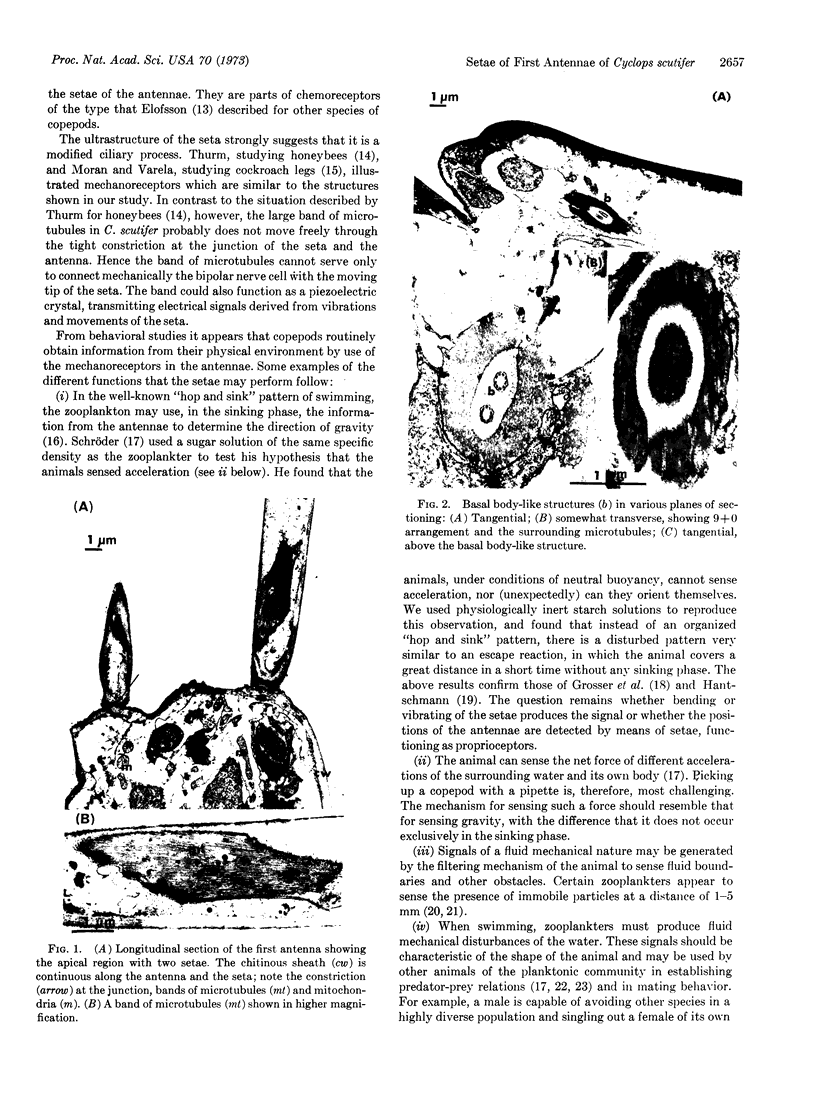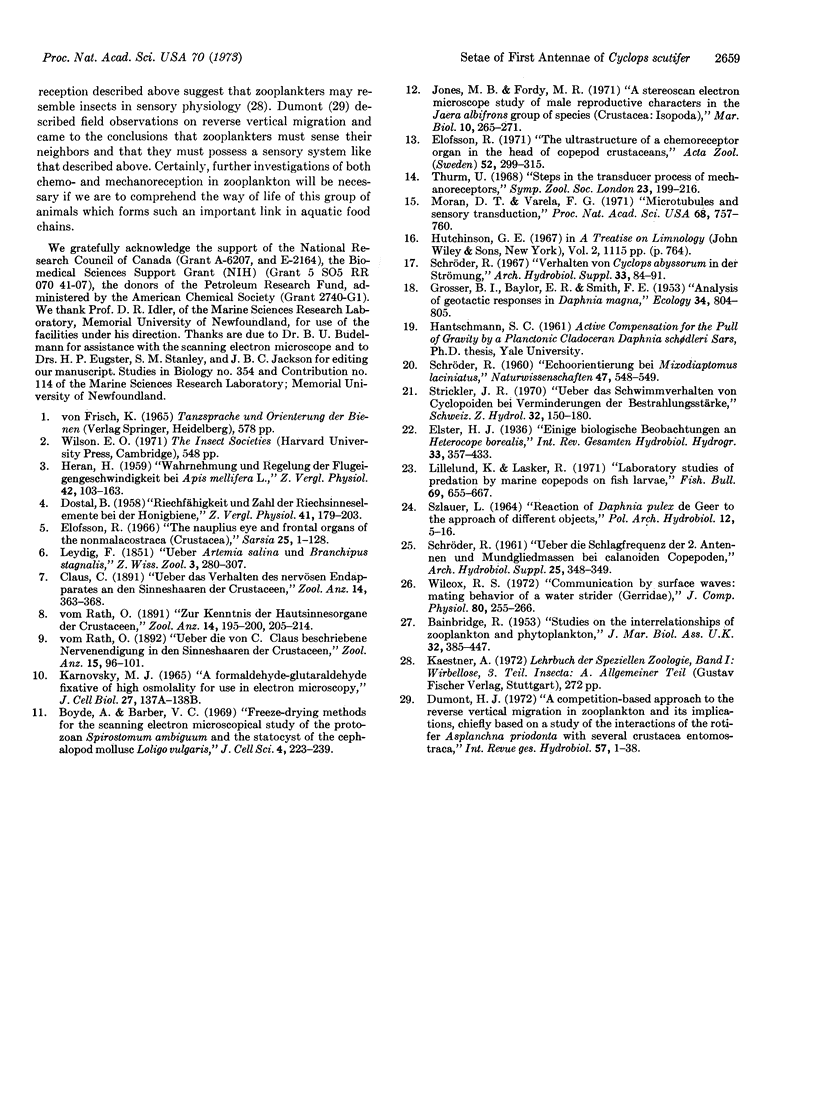Abstract
Ultrastructural studies of the setae of the first antennae of Cyclops scutifer (Sars) have revealed their sensory function. The setae are the extension of modified ciliary structures which function as mechanoreceptors. The setae apparently act to detect gravitational and inertial forces. This is of particular importance in sensing disturbances generated by prey or predators.
Keywords: ciliary structure, mechanoreceptor, information flow, prey-predator relationship
Full text
PDF



Images in this article
Selected References
These references are in PubMed. This may not be the complete list of references from this article.
- Boyde A., Barber V. C. Freeze-drying methods for the scanning electron-microscopical study of the protozoon Spirostomum ambiguum and the statocyst of the cephalopod mollusc Loligo vulgaris. J Cell Sci. 1969 Jan;4(1):223–239. doi: 10.1242/jcs.4.1.223. [DOI] [PubMed] [Google Scholar]
- Moran D. T., Varela F. G. Microtubules and sensory transduction. Proc Natl Acad Sci U S A. 1971 Apr;68(4):757–760. doi: 10.1073/pnas.68.4.757. [DOI] [PMC free article] [PubMed] [Google Scholar]






